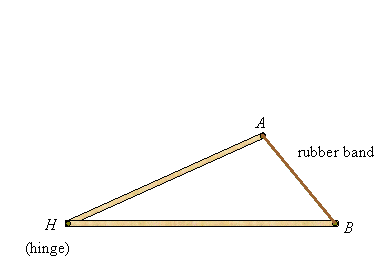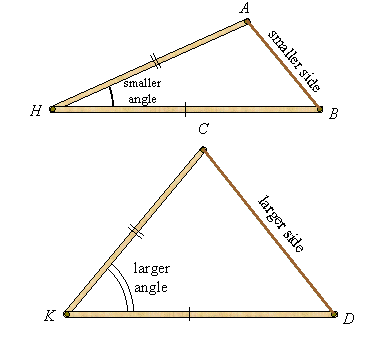
The Hinge Theorem
What is the Hinge Theorem?
Suppose you take two sticks (not necessarily of the same lengths), hinge them at a common end, and attach a rubber band at the other ends. Then you can open and close them to form triangles as the following illustrates:

When comparing two triangles with two pairs of congruent sides, you see that the triangle with the larger angle between those sides has the larger third side, and conversely:

This result is known as:
The Hinge Theorem
If in ![]() and
and ![]() ,
, ![]() and
and ![]() then
then ![]() if and only if
if and only if ![]() .
.
The result is rather obvious if you think of the rubber band idea, and we will not prove it here. Instead we will consider some examples.

Examples
Example 1:
| If |
 |
Example 2:
| If |
 |
Example 3:
Jan and Jon are hikers. They start at the visitor center and walk in opposite directions for 2 miles. Then Jan turns to her right at an angle of 20o, and Jon turns to his right at an angle of 30o. They each continue hiking for another mile and a half when both stop to rest. Who is farther (as the crow flies) from the visitor center?

Solution:
Draw the segments from each person's final position to the visitor center, and find the supplementary angles formed by their turning angles. Then you have two triangles, ![]() and
and ![]() , with
, with ![]() and
and ![]() :
:

Since ![]() , it follows from the Hinge Theorem that
, it follows from the Hinge Theorem that ![]() , so Jan is farther from the visitor center.
, so Jan is farther from the visitor center.